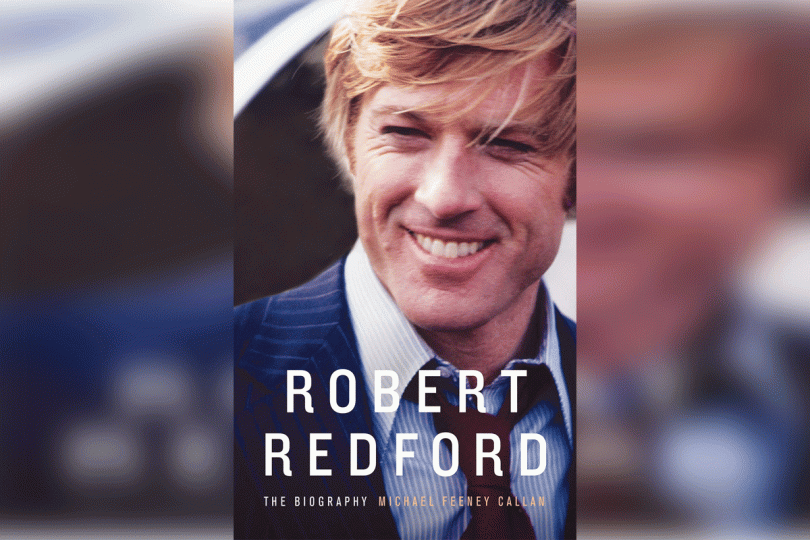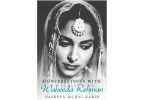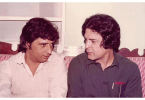As the Sundance Kid turns 86, we take a trip down memory lane to find out his story
The current Avengers’ generation may know him as Alexander Pierce, the main antagonist of Captain America: The Winter Soldier, but there is more to Robert Redford than meets the eye. The veteran actor, Academy Award-winning director, and patron of independent cinema was at one time the most bankable actor in the world and has been reinventing himself to appear relevant to multiple generations.
Author Michael Feeney Callan’s Robert Redford – A Biography takes the readers back in time where they get to know what made Robert Redford a star and read about his personal and professional struggle that helped him become America’s darling. The biography is different from the other books about the actor because it was written with Redford’s permission and also because it covered his career from the very first assignment, something many miss.
Before he became part of Hollywood, Redford had to struggle a lot, and this book gives the readers an insight into that world in which Robert Redford wasn’t famous, and wanted to try everything and anything he could get his hands on. One must also commend Michael Feeney Callan’s persistence for he managed to talk to nearly everyone integral to Redford’s rise, be it his frequent collaborators, his family members, or lifelong friends, including the Butch Cassidy to his Sundance Kid, Paul Newman with whom he shared the screen on more than one occasion.
Those interviewed didn’t just say good things about Redford, some blamed him for the failure of some of his projects while others took the responsibility for not being there for him when his marriage failed. The way the author takes the readers into the early Redford years makes them realize that had the world had its way, we may never have had a Robert Redford because he wasn’t an average person who grew up in the 1950s. He was always a thinking individual who, just like the characters he played on screen, was always on the lookout for a way to make things better for others and himself.
The way this book is paced doesn’t bore the readers, in fact, it comes up as a mixture of both biography and autobiography since sometimes Robert Redford’s comments explain things in a better manner. He talks about how his marriage at an early stage of his career helped him big time and credits his first wife for his most successful period, and also explains how they tried to recover from the loss of his first child and stayed strong till they chose to go their separate ways in the mid-1980s.
According to the author, Robert Redford didn’t have an ideal childhood as his mother was usually sick, and his father was usually absent due to work. He may not have known his grandparents while growing up but grew fond of them when he finally met them. With not an elderly influence on his life which became more difficult when his mother passed away, Robert went wayward and joined a street gang for a time, and was even kicked out of his high school for his ‘activities’. Despite all that, he managed to enrol at the American Academy of Dramatic Arts thanks to his stepmother’s letter and the rest is history.
Unlike his colleagues who didn’t evolve with time, Robert Redford kept discovering himself with every project, be it theatre, TV, or films. This book covers each and every project of his and even talks to those who were either part of those projects or disgruntled about not being considered for the projects. One thing they all agreed upon was that Robert Redford was more than a pretty face, and being blond-haired made him glow like gold, which was unsettling for some of his female co-stars as well.
Many of his co-stars, including Jane Fonda, and frequent collaborators George Roy Hill and Sydney Pollack had good things to say about him, but the author talks to them about the ‘bad’ things too, which made Redford cautious even of his friends at one time. The book also explains that films like Superman and Apocalypse Now were offered to Redford but he wanted to make films that made a difference in the audience’s life and that’s why he came up with Ordinary People which got him his first Academy Award as a director.
The book details how early success in the 1960s helped Redford take control of his career, which was further strengthened when he set up his own production company, long before it became a fashion. By doing so, he was able to shed the prettiness with different kinds of roles like the Sundance Kid in Butch Cassidy and the Sundance Kid, David Chappellet in Downhill Racer, Johnny Hooker in The Sting, and Jay Gatsby in The Great Gatsby to name a few.
His later year films like Out of Africa, Legal Eagles, Havana, Sneakers, Indecent Proposal, and Spy Game also get a mention here, and while some did well at the box office and some didn’t, they did help Redford reintroduce himself to the generation that was growing up in the 1980s and the 1990s. While projects like Legal Eagles cast him in an ‘uncomfortable’ comedy role, Sneakers provided him a chance to work with veteran Sidney Poitier and upcoming actor River Phoenix, something this book talks about in detail.
The most interesting part of the book is where the author discusses Robert Redford’s political thrillers, especially The Candidate and All the President’s Men. If you know about the changing political scenario in America in the 1970s, then a discussion about these two films is nothing short of gold. He first talks about the time when Redford started to take an interest in politics (his father hated Nixon!) and how it was he who gave journalist Bob Woodward the idea of a book about the Watergate scandal that was adapted later into All the President’s Men.
And then there was the Sundance Film Festival, which takes so much space in this book that it distracts those readers who wanted to know about Redford, the actor. Yes, the piece of land in the wilds of Utah is important to Redford because he developed it from nothing, but that doesn’t mean that it should dominate a book that should instead be limited to his exploits on screen or behind the camera.
The biography would have been better had the author managed to acquire the version of William Goldman who won the Best Writer Academy Award for All the President’s Men but at the cost of his friendship with Redford who had his draft changed. The author also conveniently forgets to mention the mediocre films Redford worked in after Indecent Proposal and just writes that the ‘so and so’ films didn’t work at the box office, when in fact some of them weren’t up to the Redford mark, especially Lions for Lambs.
Robert’s personal life which he kept hidden from the world, isn’t less dramatic than his films and despite being happily married to Lola van Wagenen for more than 25 years, his stardom and busy schedule killed his marriage. The actor blames himself for that and so do his children who have been quoted here on multiple occasions. On the whole, this biography is everything a Robert Redford fan should know, and despite a couple of issues, it keeps the Redford legend alive.







